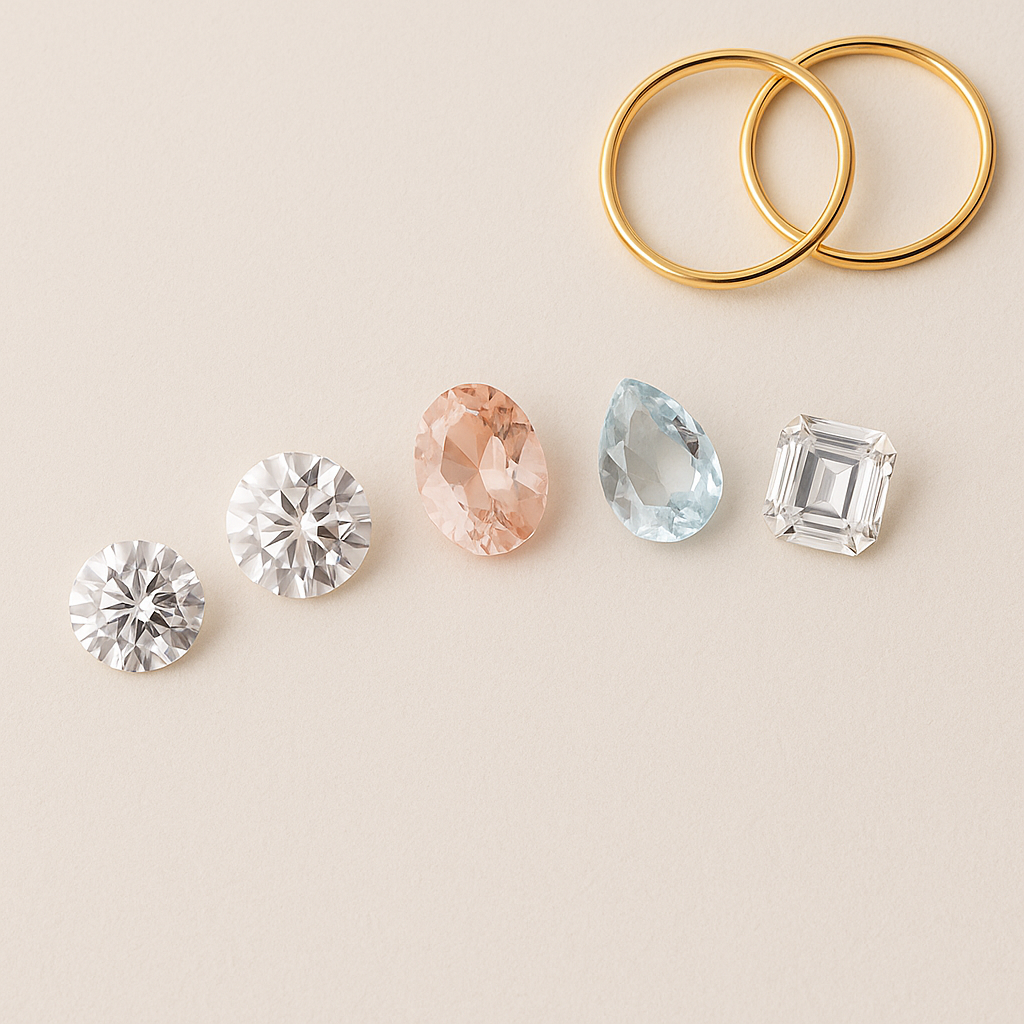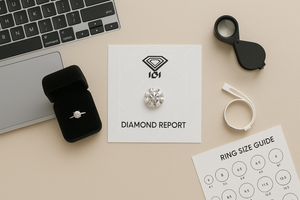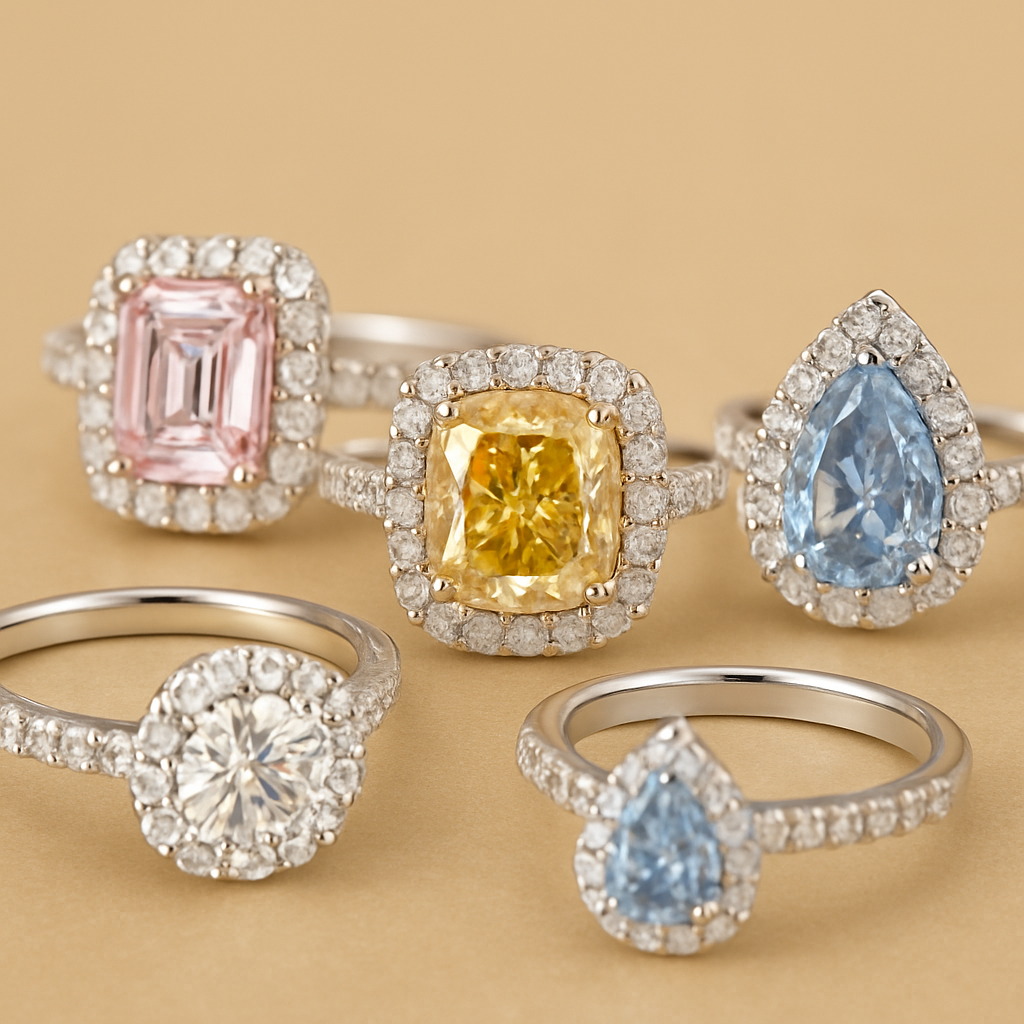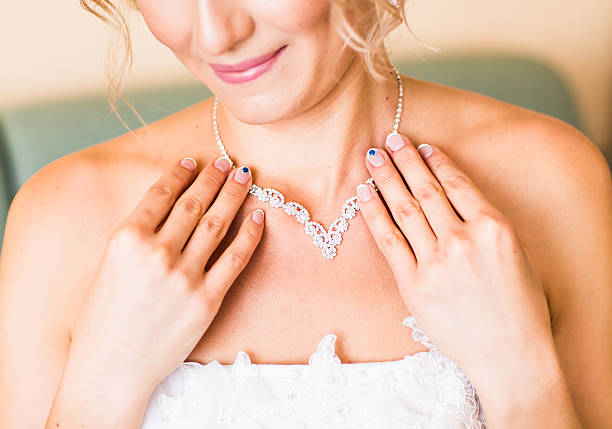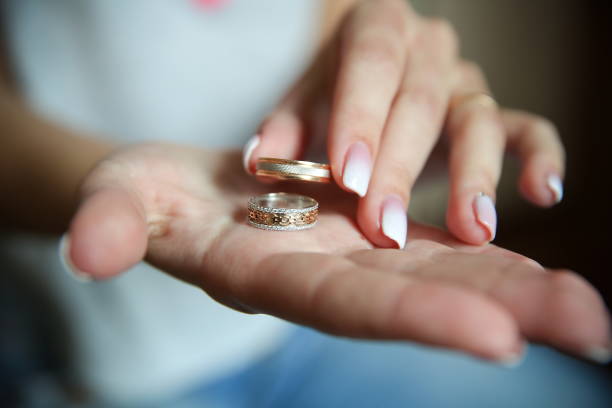Are diamonds eternal. or is there a brighter way to sparkle?
We all adore the glitter of a diamond—but the cost? Not us. Whether you're looking to buy an engagement ring, a milestone event, or just a touch of everyday glamour, diamond substitutes give the same glitter without taking a toll on your bank account.
At San Liora, we think beauty and brilliance shouldn't have budget limitations. So let's find out how you can shop smart, fashionably, and sensibly.
💡 Why Shop for Diamond Alternatives?

Before we jump into the choices, here's why diamond substitutes are becoming more popular:
Affordable: They offer you more carats per dollar.
Ethical & Sustainable: Most substitutes have a smaller carbon footprint.
Personal Style: Some individuals simply prefer a warmer color or distinct sparkle.
Less Stress: Perfect for travel jewelry or daily wear without the anxiety.
🌟 Top Affordable Diamond Alternatives (With Pros & Cons)
Let’s explore the most popular diamond alternatives with a deeper dive into what makes each unique—so you can decide what’s best for your style, budget, and values.
1. Moissanite
✅ Advantages:
- Outstanding brilliance – It has a greater refractive index than diamonds, so it glitters even brighter.
- Hardness – 9.25 on the Mohs scale, only second to diamonds (10), so it's strong enough for everyday wear.
- Affordable – A 1ct moissanite can be as little as 90% less expensive than a comparable natural diamond.
- Ethical and eco-friendly – Always grown in a lab, no mining necessary.
❌ Cons:
- Its bright rainbow glint (referred to as "fire") can appear too flashy or "unusual" to those who are used to traditional diamond glitter.
- Jewelry professionals can generally recognize that it's not a diamond—if that's important to you.
2. White Sapphire
✨ What It Is: A naturally occurring gemstone with a colorless appearance that belongs to the corundum family, which also includes blue sapphires.
✅ Pros:
- For those who favor gems that are extracted from the earth, there is a natural alternative.
- Elegant appearance: Provides a gentle, white glow without the glaring sparkle.
- Less expensive: Compared to a moissanite or diamond, a 1 carat white sapphire is substantially less expensive.
❌ Cons:
- It has a more subdued, glassy sheen with less fire and brilliance.
- Over time, it is more likely to scratch because it is softer than diamonds or moissanite (Mohs 9).
- needs to be cleaned frequently because it tends to collect dirt and oil.
3. Cubic Zirconia (CZ)
✨ What It Is: An artificial crystal that looks like a diamond.
✅ Pros:
- Very cheap – Ideal if you're on a tight budget or need a temporary fix.
- Very high sparkle when new – Can look beautiful in the right light.
- Ideal for fashion jewelry or travel – Cheap, no loss if lost or damaged.
❌ Cons:
- Not long-lasting for everyday wear – Only 8–8.5 on the Mohs scale.
- Tends to become cloudy or scratched with age.
- No resale value—most suitable for costume or temporary works.
4. Lab-Grown Diamonds
✨ What It Is: These are actual diamonds that were grown in a laboratory using chemical vapor or high pressure.

✅ Pros:
Physically, chemically, and optically, they are the same composition as diamonds that are mined.
Significant cost savings: Compared to natural diamonds, they are usually 30–50% less expensive.
Environmentally conscious: Reduced carbon footprint, no mining.
Like mined diamonds, they are certified and resellable and frequently have an IGI or GIA grading.
❌ Cons:
Due to their "natural rarity," some conventional buyers still favor mined diamonds.
Compared to mined diamonds, resale value is lower, though this is changing.
5. Colored Gemstones (Morganite, Aquamarine, etc.)
✨ What It Is: An emotional and creative option—colored stones bring personality, charm, and history.
Popular Options:
- Morganite – Warm, peachy-pink hues.
- Aquamarine – Light blue, ocean-inspired serenity.
- Spinel, Topaz, Garnet – Inexpensive and colorful.
✅ Pros:
- Very unique – Distinguish yourself with color and personality.
- Budget-friendly – Large price range based on type and size.
- Emotionally significant – Many customers purchase based on birthstones or emotional connection.
❌ Cons:
- Soft gems (such as morganite: ~7.5 Mohs) would not be good for hard, everyday wear.
- Less brilliance – They are generally not cut to refract like diamonds.
- More maintenance to preserve their luster and clarity.
🛍️ Smart Tips for Shopping Diamond Alternatives
Here's how to shop like a sparkle pro:
✅ Set Your Budget
Determine how much you can afford to spend before you fall in love with a design.
✅ Learn the 4Cs (Cut, Clarity, Color, Carat)
Even substitutes differ in brilliance and quality—particularly Moissanite and Lab Diamonds.
✅ Ask About Hardness & Durability
Opt for stones that can handle daily wear—Moissanite and Lab Diamonds are at the top of this list.
✅ Buy from Reputable Jewelers
Always seek return policies, guarantees, and honest information.
(Hint: At San Liora, we include appraisal certificates and a 12-month warranty with each piece!)
✅ Obtain Certified Stones
Particularly if you're deciding on lab-created diamonds or high-quality Moissanites.
💬 Final Sparkle of Advice
Affordable diamond alternatives aren’t about compromise—they’re about choice. Whether you're going for timeless elegance or a bold statement, there’s a gemstone that matches your style and your budget.
At San Liora, we believe brilliance belongs to everyone.✨


